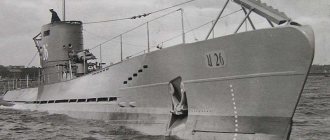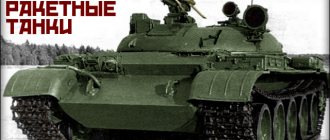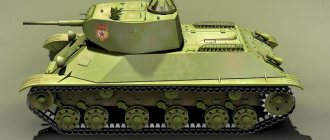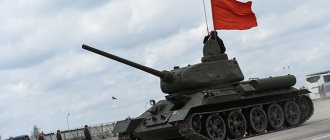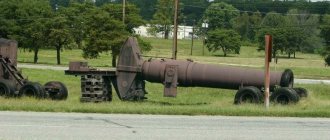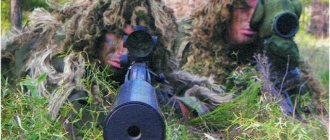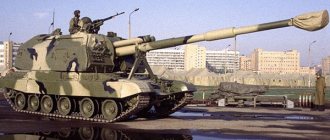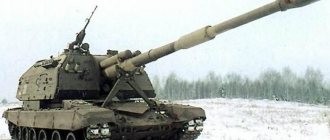Early 20th century
The first wars of the new century brought machine guns into the battle arena and created a new type of military equipment - the mortar, which first appeared during the Russian-Japanese War. The Japanese design school introduced a new type of high-explosive shells with increased power, thanks to which they won all the naval battles of that war.
During the interwar period, new war technology was created with an eye on the experience of the past. It was the experience of naval battles of the Russo-Japanese War that led to the creation of a new type of battleship - dreadnoughts.
Crawler
On March 12, 1837, the staff captain of the Russian army, Dmitry Andreevich Zagryazhsky, submitted a petition to the Ministry of Finance to issue him a patent for a carriage with a flat-link metal caterpillar. The protocol of the commission that considered the inventor’s proposal states: “from the descriptions and drawings of his invention presented by Zagryazhsky, it is clear that around each ordinary wheel on which the carriage rolls, there is an iron chain, tensioned by hexagonal wheels located in front of the ordinary one. The sides of the hexagonal wheels are equal to the links of the chain, these chains replace to some extent the railway, always presenting the wheel with a smooth and hard surface.” In October 1837 the patent was issued.
First World War
The warring sides entered the First World War with rifles and horses. Just a few years later, completely new war techniques began to be used at the front - toxic substances, tanks, and aircraft for various purposes.
At the same time, means of combating new weapons began to appear - gas masks, anti-tank and anti-aircraft artillery.
As new types of weapons developed, tactics for their use were developed and perfected.
The First World War revealed to the world such types of equipment as are known today, such as high-power long-range artillery, anti-tank rifles, and various automatic weapons.
Motorized military equipment was widely developed during the First World War. In addition to the already mentioned tanks, armored vehicles with cannon and machine gun armament, built on truck chassis, began to be used.
During the First World War, early examples of engineering equipment appeared, such as, for example, machines for digging trenches. Such installations significantly accelerated the preparation of defensive lines.
Well, according to tradition, not exactly a military theme... Space rocket
Human flight into space... It seemed like a pipe dream, the plot of a science fiction novel. However, the power of the human mind turned out to be more powerful than the force of gravity: Konstantin Eduardovich Tsiolkovsky became the first in a galaxy of brilliant scientists who managed to overcome the seemingly immutable laws of nature. He not only proved that the only device capable of making a space flight is a rocket, but also developed a model of it, although during his lifetime he was never able to observe the launch of a spacecraft.
Source
Interwar period and World War II
Already in the 20s, the active development of weapons developed during the First World War and the introduction of new solutions into their design began. Slow and lightly armored tanks radically changed in design and by the end of the 30s of the last century they became a means of lightning-fast offensive operations.
The USSR, which created many new types of weapons in the pre-war decades, did not lag behind the global trends of those years.
Soviet designers created such weapons as the T-34 and KV-1 tanks, modern Yak-1 and MiG-3 fighters, Pe-2 bombers and much more. The new military equipment was practically not inferior to its German counterparts, and in some respects even surpassed them.
Domestic military equipment passed the test with honor in the Second World War, which went down in history as the “war of engines.” The development of Soviet military equipment during the war years proceeded at an increasing pace. Already in the first year, multiple launch rocket systems “Katyusha” began to enter service, the equivalent of which no other army had.
In the first post-war years, there was not much interest in the technology and weapons of the Second World War. This was due to the general situation in the country and the impossibility of purchasing such equipment after being written off.
Many samples of equipment were irretrievably lost, but some of them were preserved in museums.
The largest collection of armored vehicles in Russia is located in the town of Kubinka near Moscow.
Interest began to awaken only in the early 70s, when collectors of old cars began to unite in various clubs. However, the sphere of interest of these clubs did not extend beyond automotive technology.
Nowadays, there is a growing interest in various equipment from the Second World War that took part in hostilities on the Soviet side or on the side of the Wehrmacht. Dozens of different search teams and workshops are engaged in the search and restoration of old military equipment.
One of the museums demonstrating weapons and military equipment of the ground forces is located on Poklonnaya Hill.
Aleksandrovsky self-propelled torpedo mine
I.F. Aleksandrovsky went down in history with the submarine project, but was forgotten as the creator of the first Russian self-propelled torpedo mine. In 1861, he completed the design of the submarine and built it in 1866. But his “torpedo”, manufactured a year earlier with homemade means, but which already showed combat potential in the first tests, by Admiral N.N. Krabbe was rated "premature". And officials from the naval department paid considerable money to the English manufacturer Whitehead for his torpedo, which in terms of tactical characteristics was not superior to ours. The idea for a torpedo came to Aleksandrovsky during the construction of the boat. By analogy, I decided to create “a self-propelled torpedo that would run on compressed air and be controlled at depth.” These two positions, which became Whitehead’s “main secret,” would be revealed by the Russian nugget a year before the British “father of the torpedo.” But only 2 years later - in 1868 - he would be allowed to build it using “his own funds with subsequent compensation.” Ultimately, his “independent mine” will have a speed of 10 knots, and Whitehead, bought by the Austrian government for 200 thousand guilders and the British for 15 thousand pounds sterling, only seven.
Post-war conflicts
After 1945, the creation and development of new war technology began, which was created taking into account the emerging nuclear weapons. All samples of tracked and wheeled vehicles were created taking into account possible action in conditions of contamination of the area with radioactive decay products.
For this purpose, various filtering devices were used to prevent radioactive dust from entering the machines. The first direct competition between military equipment of the USSR and the USA was the Korean War.
During this conflict, jet fighters of the latest models at that time - the MiG-15 and Saber - were massively used. During the Vietnam War, the brainchild of the American and Soviet design schools met again in the sky.
A little later, many famous examples of Soviet military equipment appeared - the T-55, T-62 and T-80 tanks. These vehicles were supplied to the armed forces of many countries and are still in service today. Another symbol of military conflicts of the second half of the 20th century was the Kalashnikov assault rifle.
The experience of operating US military equipment had a great influence on the development of the post-war industry of the USSR.
This was especially pronounced in the automotive industry. The experience of using Studebaker US6 army vehicles has shown the urgent need to create similar wheeled vehicles of domestic production.
Such vehicles under the designation ZiS-151 appeared immediately after the Second World War. Gradually, this technique began to be used in the civil service. Based on existing developments, Soviet designers were able to create a number of unique off-road army vehicles - GAZ-66 and ZIL-131.
In terms of cross-country ability, these vehicles will leave many developments of that time far behind. However, the price for such characteristics is a complete lack of comfort in the cabin.
Another important legacy of Lend-Lease was the two-stroke diesel engines that began to be equipped with post-war YAZ-200/210 (and later MAZ) trucks.
Initially, the American diesel GM was created to equip light army equipment. Domestic motors remained in production until the end of the 80s and were used to drive various mobile power plants.
Giant aircraft carrier made of ice
Or rather, not entirely made of ice: to create the Habbakuk, the British wanted to use pykerite (a frozen mixture of water and sawdust). In 1942, Great Britain had a hard time due to the constant presence of German submariners. At the same time, there was critically little metal to create escort aircraft carriers. This is how the idea was born to create a giant aircraft carrier, 610 m long and 92 m wide. For comparison, the huge modern US Nimitz-class aircraft carriers are almost half the size.
The Habbakuk was supposed to accommodate 200 winged vehicles, and the aircraft carrier itself, according to the plan, was almost unsinkable. To do this, they wanted to increase the thickness of its sides to 12 m. Reconnaissance aircraft, fighters and anti-submarine aircraft - submarine hunters - were supposed to take off from the deck of the ship. This is how they wanted to ensure the safety of the Atlantic convoys.
In order for the ship to operate normally, it had to be cooled all the time. In addition to this, the Habbakuk was still very expensive to build, and its cruising speed would not exceed 6 knots (11 km/h). A model was built, but the matter did not advance further: by that time the British had already received quite a few escort aircraft carriers. Under the most favorable circumstances, they wanted to transfer the giant aircraft carrier to the fleet in 1944.
Habbakuk / ©Deviantart
Collapse of the USSR
After the collapse of the Soviet Union, a fairly long period of stagnation began in the development of weapons and the army.
The troops of Russia and the CIS countries were content with the remnants of military equipment of the USSR, which remained in large quantities in various warehouses. But the existing weapons fleet quickly became outdated and, without a stable supply of spare parts for military equipment, broke down.
Almost 10 years and two bloody wars in Chechnya had to pass before the need to modernize the army was realized.
Since the beginning of the 2000s, active decommissioning of military equipment that has exhausted its service life and the supply of new equipment, which was manufactured anew or came from long-term storage bases, began.
Kotelnikov's backpack parachute
Artillery officer Gleb Kotelnikov was an artistic person. And the very idea of designing a compact parachute came to him in the theater. After the performance, in the dressing room, I noticed a tight bundle in the lady’s hands; she waved it, and the tight bundle suddenly turned into a huge scarf. And in 1911, almost a year after the tragic death of the Russian pilot Captain Lev Matsievich, which Kotelnikov personally witnessed at the All-Russian Aeronautics Festival, he came up with a fundamentally new free-action aviation backpack parachute RK-1. But when he applied for registration, he was refused. The head of the Russian Air Force, Grand Duke Alexander Mikhailovich, feared that “at the slightest failure of the aircraft, pilots would begin to abandon their expensive aircraft in the air.” And only on March 20, 1912 - already in France - Kotelnikov received a patent No. 438 612. The first tests were carried out with a car. The backpack was secured at the back. When the car took off, the parachute cut off the speed so abruptly that the engine stalled. The second - with a balloon. An 80-kilogram mannequin “jumped.” The first human jump from a 60-meter height from a bridge over the Seine was made by Vladimir Ossovsky, a student at the St. Petersburg Conservatory, in Rouen on January 5, 1913. Initially, a silk canopy and slings, divided into 2 groups and attached to the shoulder girths of the suspension system, were put away in a wooden (later aluminum) backpack. In 1923 it was improved to a honeycomb envelope for slings. The Russian army received Kotelnikov's parachute well. In 1917 alone, 65 descents were made.
Rearmament
The Russian armed forces today are very different from the army equipment of the early 2000s. The existing arsenal of weapons and military equipment is constantly being updated with new and modernized models.
According to experts, by 2022 at least 70% of the existing arsenals should be updated, for which it is planned to spend at least 19 trillion rubles. However, existing difficulties with financing may shift the timetable for rearmament to the distant future.
Thus, in December 2022, a decision was made to temporarily suspend work on the promising Barguzin rail-mounted missile system. Further prospects for the development of this unique and paradoxical type of military equipment remain in question.
It is planned to create several dozen different types of aircraft (including the new fifth generation fighters) and helicopters.
The total supply of such equipment should exceed 1,500 pieces.
Moreover, many helicopters are dual-use military equipment, since they can be used for military or civilian purposes. At the beginning of December 2022, the new generation Su-57 fighter, equipped with a new promising turbojet engine, made a test flight.
Particular attention is paid to light military vehicles intended for the delivery of personnel and fire support for attacking units. One example of such equipment is the Kornet-D complex, installed on the chassis of the Tiger armored vehicle.
Another direction in the development of wheeled warfare vehicles are multi-axle vehicles used for the delivery and launch of intercontinental ballistic missiles.
To popularize various types of weapons, a permanent exhibition of military equipment has been organized at VDNKh. Anyone can freely visit this exhibition and get acquainted with the exhibits, including the Shilka anti-aircraft gun.
This installation became the world's first complex capable of repelling attacks from aircraft moving at high speeds at low altitudes. Also among the exhibits are the Buk and Osa anti-aircraft systems.
S-400 "Triumph"
We owe clear skies to the domestic missile defense system, which has no analogues to the anti-aircraft missile system - the S-400 Triumph. Detection range 600 km, destruction range 400 km, altitude 30 km. The uniqueness of the most advanced complex is obvious; NATO reconnaissance aircraft and stealth bombers, supersonic ballistic (4.8 km/sec) and low-flying cruise missiles (from 10 m) are hit. 36 enemy aircraft are destroyed at the same time; each target can be launched and targeted with two missiles simultaneously. These are all record figures. For example, the American main MANPADS "Patriot" does not shoot down ballistic missiles and cruise missiles, and aircraft flying at an altitude below 60 m. The best US anti-aircraft system can simultaneously hit up to 8 targets, the maximum range of anti-missiles is 170 km. The Patriot MANPADS operates on data received from the satellite, so the response speed is 90 seconds lower compared to the Russian S-400 and their system may not have time to respond. It adds invulnerability to the Russian missile defense system and serves as protection for the S-400 - the Pantsir-S1 air defense missile system, which covers the sky at the closest line from the ground, from 3 m and at a distance of 36 km. Another competitor to the S-400 is the Israeli Fortress Wall complex, which shoots down all types of missiles except low-flying ones and aircraft.
Prospects
The military equipment of the future is created not only on the basis of existing technical and technological solutions. One of the new directions is the use of an electromagnetic field for firing from artillery and small arms.
Such samples of US military equipment have already passed the first tests, which confirmed the viability of the idea. Another option for accelerating bullets is centrifugal force. Such technology can theoretically provide a rate of fire of over 100 thousand rounds per minute. At the same time, the weapon is absolutely silent and does not reveal its location by flashes of shots.
The disadvantage of the scheme is the very large dimensions and difficulties in controlling such installations.
Classic firearms are not lagging behind in development. Instead of all-metal bullets, the possibility of using products with a built-in guidance system is being considered.
At the moment, prototypes of 12.7 mm bullets with a trajectory correction system have been created.
Another way to hit targets is a laser beam. The US Navy conducted a demonstration of this type of weapon. According to American representatives, the army laser can cut a steel sheet up to 6 meters in length in a second.
In parallel, development of small-sized lasers adapted for placement on aircraft is underway. Such weapons could theoretically be used to combat enemy aircraft and UAVs.
While the introduction of such weapons remains a matter of the future, various laser equipment is widely used in welding various metals, making it possible to obtain thin and strong seams.
Another direction in the development of military technology is the use of unmanned systems. Small unmanned aerial vehicles are used for reconnaissance. There are prototypes of large drones capable of carrying various missile weapons.
The prospects for this type of weapon are quite high, especially considering the rapid introduction of such technologies on civilian equipment. New concepts of warfare provide for the use of so-called non-lethal weapons. One type of such weapon is a sound vibration generator.
The operating principle is based on sound amplification through a resonator. The resulting shock waves temporarily disorient people. The principle of the influence of sound of a certain frequency, causing a feeling of fear and even panic in the enemy, has been studied. The psychological aspect is very important, especially with modern warfare.
It is proposed to facilitate the movement of infantrymen of the future with the help of special exoskeletons. Parts of such equipment are made of titanium and titanium-based alloys. The use of an exoskeleton makes it possible to increase the weight of the load carried by a person for a long time to 100 kg.
Any development of weapons contributes to the progress of conventional technology. All possible advanced weapon technologies are gradually finding or will find application in civilian technology - just as it was 50 and 100 years ago.
TOS "Solntsepok"
It’s always hot near the front line, especially when the TOS-1A Solntsepek heavy flamethrower system is nearby. In 2001, the TOS-1 “Buratino”, developed in 1979, was modernized. Now, at a range of not 3.6 km, but up to 6 km, it is guaranteed to hit enemy personnel over an area of 40,000 m2. Unguided rockets are filled with a thermobaric mixture, sprayed into a cloud at the site of impact. Reacting with atmospheric air, an instant explosion occurs with a sharp increase in atmospheric pressure and its sharp decrease (160 mm below the mercury column). Enemy soldiers die from ruptured internal organs. The maximum destructive effect is in the mountains, where the shock wave intensifies between the rocks.
Tortuga (Venezuela)
Venezuelan tank
This tank was produced in 1934 in Venezuela. The purpose of creating the car was rather strange - to intimidate neighboring Colombia. True, the intimidation turned out to be dubious. Suffice it to mention that the word “tortuga” means “turtle” in Spanish. The tank's pyramid-shaped armor was mounted on a four-wheel drive six-wheel Ford truck. The only weapon installed in the turret was a 7-mm machine gun of the Mark 4B series. A total of 7 “turtles” were released in Venezuela.
Boston Dynamics robot dogs: no more bones needed
What do you think happened when Boston Dynamics (a robotics company) and DARPA (Defense Advanced Research Projects Agency) teamed up on a joint project? You might think it's something creepy. And at first, seeing their joint creation - robot dogs - you might think that we are already living in a fantastic twilight future. But in fact, these robots, although military, are not scary. Even when there is a whole flock of them. These robots are not dangerous. They are designed to transport military equipment in difficult to reach areas.
Simms Motor War Car: what is it?
If you think this car is wrapped in skirt-like sheet metal, it is. The Motor War Car, born in 1889, was the first armored vehicle ever built by man. And it was developed by Frederick Richard Simmson. Although this seems comical in 1889, we are sure it scared people back then. The armored car, 8 meters long and 3 meters high, had a maximum speed of 15 km/h.
Italian self-propelled gun (Italy)
Experts believe that the Italian self-propelled gun was used to shell Austrian fortifications in the Alps during the First World War
The Italian self-propelled gun was invented around the same time as the Tsar Tank. But, unlike the latter, it was successfully used in the First World War.
The Italian self-propelled gun is one of the most mysterious tanks in history. Very little information has been preserved about him. It is reliably known that the unusual tank was large in size; it was equipped with a cannon that fired 305 mm caliber shells. The firing range reached 17.5 kilometers. Presumably, the Italian self-propelled gun was used when shelling Austrian fortifications located in the Alps. Unfortunately, nothing is known about the further fate of this car.
Armored quad bike (UK)
The armored ATV had a power of only 2 horsepower
If Hollywood had started making films about the indestructible James Bond in 1899, the British armored ATV would definitely have become one of Agent 007's means of transportation. The engine power of this four-wheeled vehicle is less than 2 horsepower. The driver had to sit on the bicycle saddle. The weapon included a machine gun.
Note that the ATV’s armor protected only the driver’s torso and head, and only from the front. The cross-country ability of such a vehicle was extremely low, so it was never mass-produced.
Cybernetic anthropomorphic machine GE Walking Truck: walking truck
Before the advent of Boston Dynamics' robotic dogs, the world had a walking, controlled robot car called CAM, which was developed by GE (General Electric). She was known as a cybernetic anthropomorphic machine, a walking truck based on a pedipulator. Unfortunately, this did not prove practical at the time, as it required an operator to sit inside to operate the walking truck. The maximum speed of the walking machine was 8 kilometers per hour.
Moscow Defense Museum
Michurinsky Avenue, Olympic Village, building 3
The exhibition of the Moscow State Defense Museum is mainly dedicated to the Battle of Moscow - one of the key battles of the war. It’s worth going here to understand how the USSR was able to repel the attack of an enemy that seemed invincible at the time, and prevented it from taking over the capital.
Military equipment that took part in the defense of Moscow can be seen on the site located at the entrance to the museum. Here is the M-30 howitzer from 1938, the ML-20 howitzer gun from 1937, the 61-K anti-aircraft gun from 1939, the ZiS-2 and ZiS-3 guns and, of course, the famous Katyusha.
The museum building houses five thematic halls. The first tells about how the capital lived in the first months of the war, the second tells about repelling air raids. The third hall is entirely dedicated to the Battle of Moscow, the defensive phase of which lasted from September to December 1941.
The last two halls are dedicated to the counter-offensive, which began after the victory in the battle of Moscow, as well as the military path of the Soviet troops that reached Berlin.
Kugelpanzer or tank ball (Germany)
The tank ball is preserved in a single copy
Almost nothing is known about this vehicle, the only copy of which is kept in the Kubinka Armored Museum. The tank weighed 1.8 tons and was produced in Nazi Germany by Krupp. The car was captured by the Soviet army in 1945. According to one version, this happened in Manchuria, according to another - at a German training ground. There was a radio station in the cabin; there were no weapons. The hull was solid and could be entered through a small hatch. The engine of the tank-ball is single-cylinder, motorcycle. It is assumed that the strange machine was intended to correct the direction of artillery strikes.
Infantry fighting vehicles
- Armored personnel carrier BTR-90 "Rostok" (Russia)
- Armored border vehicle BPM-97 "Vystrel" (Russia)
- BMP-3 infantry fighting vehicle (Russia)
- Armored personnel carrier M113A3 (USA)
- IAV Stryker infantry fighting vehicle (USA - Canada)
- Bradley combat reconnaissance vehicle (USA)
- Puma infantry fighting vehicle (Germany)
- Boxer infantry fighting vehicle (Germany - Holland)
- MCV-80 Warrior infantry fighting vehicle (UK)
- Armored personnel carrier Achzarit (Israel)



